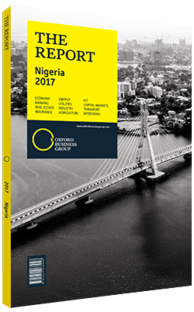Godwin Nwabunka, CEO, Grooming Centre: Interview

Interview: Godwin Nwabunka
What is the single biggest challenge facing microfinanciers in Nigeria?
GODWIN NWABUNKA: The biggest challenge is the inadequate recognition of microfinance as a vibrant and important sector with very high potential. Rather, it is seen as a small sub-sector within the financial space. Therefore, it is not sufficiently provided for in terms of its growth and developmental requirements. Although the regulatory framework exists and has undergone review, there are no well-defined programmes aimed at deliberately meeting start-up needs, institutional capacity building, or funding and promoting a market-driven growth process. For instance, microfinance banks and institutions are always mentioned as being implementing agents for major grassroots and poverty alleviation programmes, whose delivery mechanisms are determined mostly with limited input and consultation from key players in the industry. This undermines the success of such initiatives and their contribution to the growth of the sector, as they are not designed to take into account actual delivery and turnaround costs.
How has digitisation affected microfinance?
NWABUNKA: Digitisation has had a positive impact on product diversification and the efficiency of delivery systems. There is a greater variety of products, ranging from airtime top-ups and mobile wallets to micro-insurance. The use of e-channels removes brick and mortar restrictions for microfinance institutions, allowing them to take their services to the doorsteps of their customers, leading to reduced costs and increased efficiency. The digital revolution has also increased the availability and accessibility of customer information with biodata and credit histories reducing information asymmetry and enabling better personalisation of products, more accurate and quicker appraisals, as well as shorter turnaround times. Digital tools are also gradually driving effective service delivery. Disbursements to customers can be made on prepaid cards, reducing the risks associated with cash, while simple applications can help customers make better business decisions.
What impact has microfinance had on the broader financial services industry?
NWABUNKA: There has been a substantial impact in terms of outreach and the dispersal of financial services. There are now thousands of branches throughout the country, with about 60% located in rural and remote areas. Therefore, the greatest effect with regards to penetration is found in these formerly excluded rural households because microfinance lending provides an entry point to the formal financial sector. Agent banking and digital financial services will continue to bolster service reach as time goes on. Microfinance’s effect on urban areas cannot be understated either, as metropolitan areas such as Lagos, Ibadan and the Federal Capital Territory generally have the highest density of microfinance banks and institutions, with a substantial number of clients that operate micro, small and medium-sized enterprises.
How can the availability of information on potential borrowers be improved?
NWABUNKA: This information is important as it forms the basis of credit assessments and the specific interventions required to meet client needs. The bank verification number is a good initiative aimed at improving availability, as is the entrance of credit bureaus into the microfinance space. However, these initiatives provide information on individuals that are already banked, so a gap still exists with unbanked potential borrowers.
Moving forward, the National Association of Microfinance Banks and the Association of Non-Bank Microfinance Institutions can assist with optimising these information-sharing platforms. The success of the National Identity Management Commission will also help with improving the availability of this information.
You have reached the limit of premium articles you can view for free.
Choose from the options below to purchase print or digital editions of our Reports. You can also purchase a website subscription giving you unlimited access to all of our Reports online for 12 months.
If you have already purchased this Report or have a website subscription, please login to continue.

